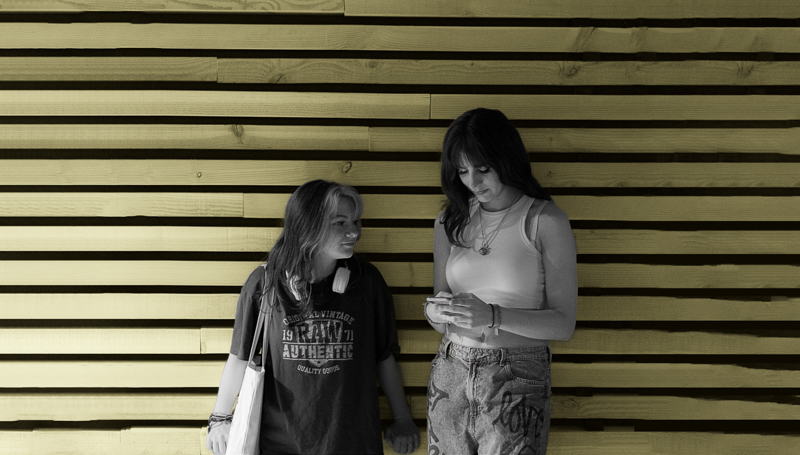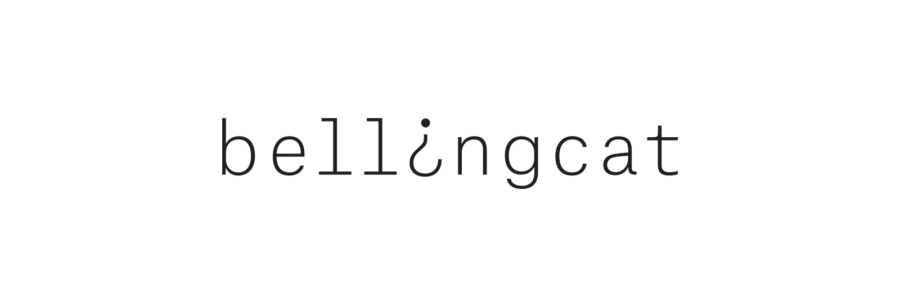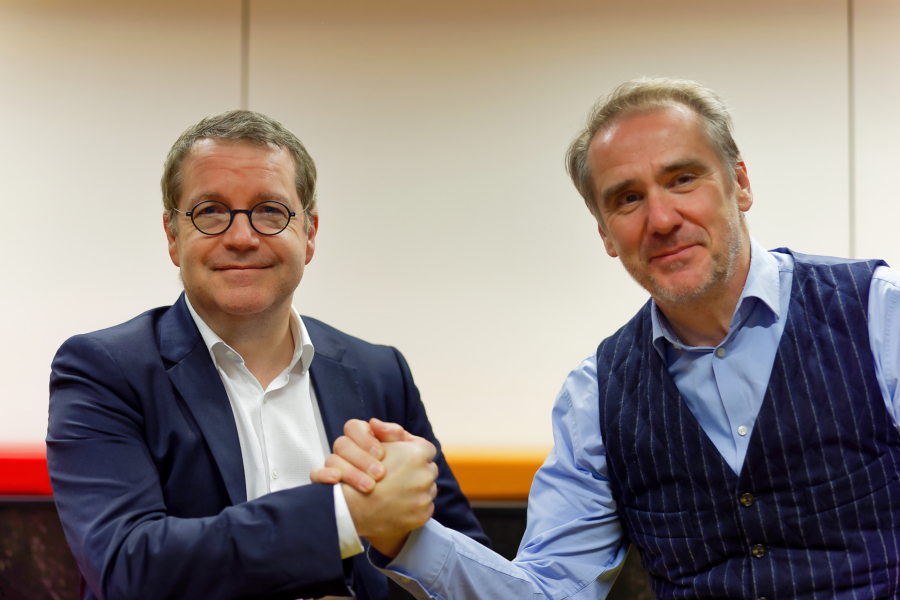31 January 2023
InsideOut
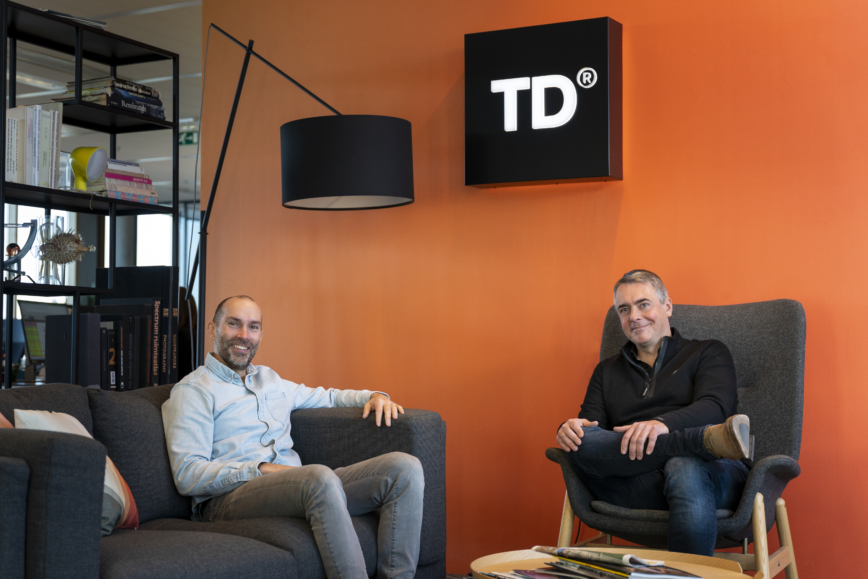
A series of interviews by Hugo van den Bos with employees and customer. This issue: ING & Total Design
Continuous Branding
In a conversation with Stephan Reschke and Eddy Wegman from Total Design and Tom Prakke from ING, I try to find out what this term means, Continuous Branding. I had never heard of it but could imagine its meaning. But was I right? And why are TD’s International Branding Team and ING so enthusiastic about it? At an agency you would tend to think, ‘that’s neat, because Continuous Branding naturally also means Continuous Business.’ And although that is not denied, there is still more behind it.
Tom Prakke (Global Brand Experience Lead – ING): ‘Continuous Branding, as a new concept, sounds like a marketing term. Yet it resonates quite quickly within a large organization such as ING because it is reminiscent of Continuous Delivery, a concept from the IT world. It emphasizes the agility, urgency, and speed that the markets demand. This contrasts with the image that one may have of Branding as slow, conservative, and maybe even archaic.’
Eddy Wegman (Creative Director) and Stephan Reschke (Head of Team International Branding at TD): “We no longer necessarily believe in large megalomaniacal branding projects. It is outdated to overhaul the brand every 5 – 10 years and record it in guidelines. It’s not like a car that you buy new and then write off.’
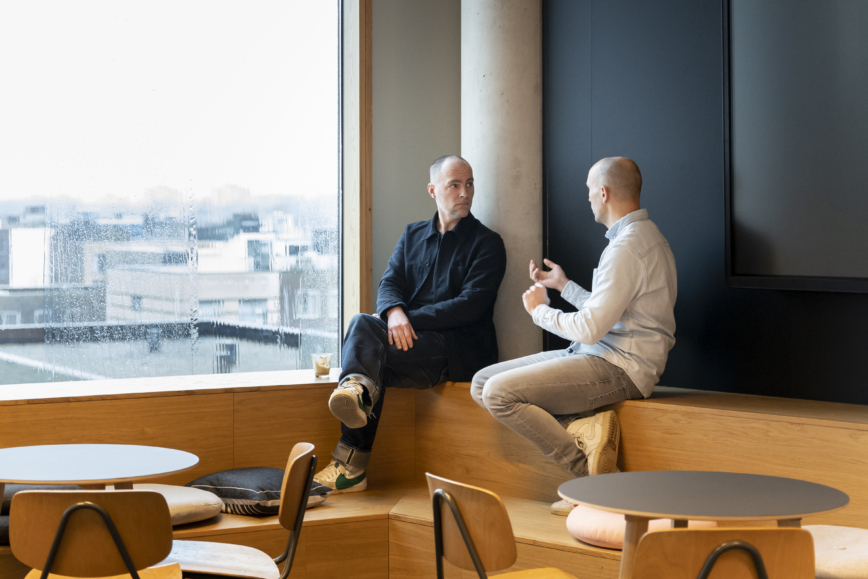
Okay, but how does Continuous Branding work?
TP: “Considering the design of ING, we can distinguish three levels. At the bottom you have the basic elements, brand assets and guidelines, then you have the applications within the Brand Experience Shared Space, and high in the sky the North Star shines.”
“The North Star stands for the vision, where we want to go with the design of the brand. This is the most strategic and most explorative level. There is continuous experimentation, testing and validation here. In a small team, the design leads from Branding, UX Design and TD work together in a kind of lab situation. As the name suggests, the North Star sets the direction for all other design processes.”

‘In the Brand Experience Shared Space, we look at how the Brand Experience can be further perfected each time. ING’s markets play a significant role here. We bring them together every three months to identify needs and ensure local relevance. The ideas are developed into benchmark designs. These are inspiring and concrete design applications, often in a digital environment, which you can see as trial balloons. Here, too, there is continuous experimentation, testing and validation in short design sprints, according to the Double Diamond method. In this process a high degree of freedom is important, there are no sacred cows, and it is always about one touchpoint at a time.’
‘The benchmark designs are the pivot around which everything revolves. Insights that arise from the benchmarks can in turn influence the vision and at the same time lead to fundamental design adjustments of the relevant touchpoint. This creates a flywheel that is constantly moving and works both ways, strategically and practically/commercially.’
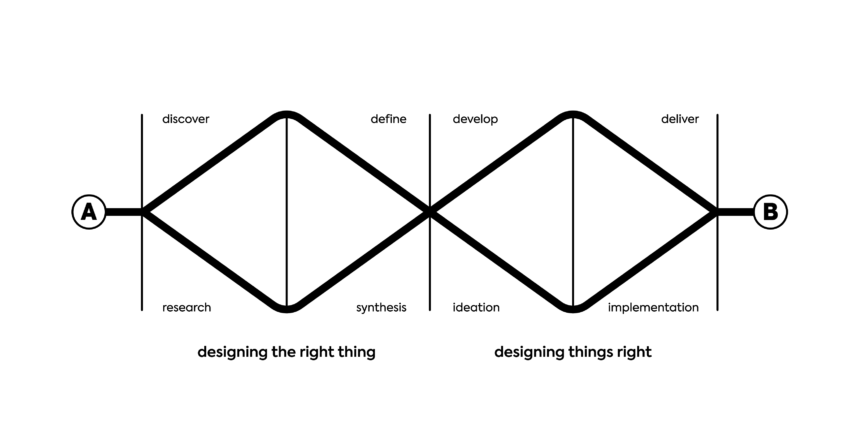
E&S: ‘Because the Brand Identity, or rather Brand Experience, is constantly evolving, we prefer not to talk about rules-based, but about principle-based design. This is something we are pursuing. Right now, this already means that there is more room for touchpoints to differ from each other.’
TP: ‘We accept that we are not consistent across all touchpoints, that would be impossible. Social media, for instance, has its own dynamics. We do strive for coherence. I would much rather color outside the lines together, where we do initiate and discover patterns and needs, than that everyone goes off on their own.’
TP: ‘I was inspired by Hans Monderman, a civil engineer, for the freedom that this method entails. Monderman has shown with his ‘shared space’ concept that people take more responsibility when there are fewer traffic signs.’
TP: “The most important thing about this method is that it bridges the gap between Branding designers and the UX Design community. The UX Design community naturally has a lot of influence on ING’s digital customer experience. You might think that a brand consists solely of the sum of the functional interactions, but that is only part of what determines the customer experience. It is not just about the conversion, but also about the strategy, about the personality and soul of the brand.”
I can’t imagine that this method is unique to ING, what makes ING special?
TP: ‘No, of course it’s not unique to ING. Everyone understands that brands must evaluate faster and faster and that UX and commerce set the pace. But it is important for ING to be a group of countries where we leverage their local strengths when it is advantageous. Our team mainly coordinates in the background and works with the markets where we have contact with our customers.
E&S: “You can almost see the ING brand as a franchise. The brand should contribute to the results of the markets and not the other way around.”
TP: ‘And what I think is also quite special within ING is that the Head of Communications, Brand and Marcom reports directly to the CEO. This is important. Continuous Branding requires a lot of involvement and provides a lot of freedom, but it must also be clear who is in charge.’
E&S: ‘Last but not least, it is special that the Brand Experience Team mainly consists of people with a design background. You don’t come across that too often. Usually it’s all managers.”
Do you also have a design background, Tom?
TP: ‘I have never followed a classical design course. Fortunately, I am curious by nature. That’s how I ended up in the world of UX design in the late 90s. I am self-taught. Before joining ING, I worked for years as a UX designer at the intersection of psychology, technology, and design.
What have you learned and what are you running into?
TP: ‘If you want to continuously develop the design from practice, that also requires local design expertise. Which must be high-level, at least if you don’t want to prescribe all the design from a central organization. That is a challenge. Furthermore, it remains difficult to test the impact of design. I’m not talking about conversion, but about the trade-off between effectiveness and ‘individuality’. If you judge design solely on the ‘number of clicks’, then it all becomes very flat and repetitive.’
Isn’t there a danger that with the continued evolution of the brand in small steps, you lose sight of the big steps?
TP: ‘I understand what you mean. What we do is not romantic or extreme, no grand gestures. It is often a trade-off of effort versus result without much risk. That is why it is so important to work with an external agency. I continuously ask them to challenge and excite us.’
How do you avoid, when you work so closely with an agency, that you end up in a symbiotic relationship?
E&S: ‘We need to keep renewing the team, which is what we do.’
TP: “We must keep each other on our toes. Take Eddy, we appreciate him very much and he has a very important role. But of course, there is also the danger that he will lose his focus. He has already seen and experienced so much with us, so it’s hard to remain open-minded. I can also imagine that at some point he will want something different.’
Tom, what else do you want?
TP: I’m having a great time. I am close to the strategic discussions, and one of the most important strategic design challenges right now is to involve customers and stakeholders in ING’s Sustainability (ESG) policies and activities. Especially there, everything must add up, be credible and transparent. And just as we in the Brand Experience Team try to bridge the gap between Brand Design and UX Design, we are also building bridges between design and corporate and marketing communication.
E&S: “We do this, among other things, by continuously developing playbooks in addition to benchmarks. These are inspirational examples for the application of design in the communication. For example, we invite the communication people to think about how design can help them, and we try to make the design process as transparent and objective as possible.’
Eddy and Stephan, how does this method fit into your own development?
E: ‘I have always been more attracted to the meaning of brands. In that sense, I am perhaps more strategically than visually driven. When I look at the core team that works on ING (six people), 50% of the work they do is visual. The rest is strategic, process-oriented, and relationship-oriented. It may be a bit boring sometimes, so it takes a bit extra to keep young designers motivated. But that can also create an incentive, also for ING (smiles).’
S: ‘In the past I have worked for VW, Lidl, and Deutsche Telekom. Of course, these were also fully integrated design processes, and we had Brand Teams in which different disciplines came together. But the continuous explorative development based on the daily needs in the market, as is now the case at ING, is really next-level.’
E&S: “It also means a great responsibility. ING places a lot of trust in us. That we continue to challenge the brand, but at the same time don’t destroy it. That’s a thin line, where you constantly check if you’re doing it right: is it not going too far or, just as important, is it going far enough? Of course, you do this together, but still…”
Is Continuous Branding more cost efficient?
TP: “I don’t know yet, but we simply have no choice. Our stakeholders demand it of us.”
